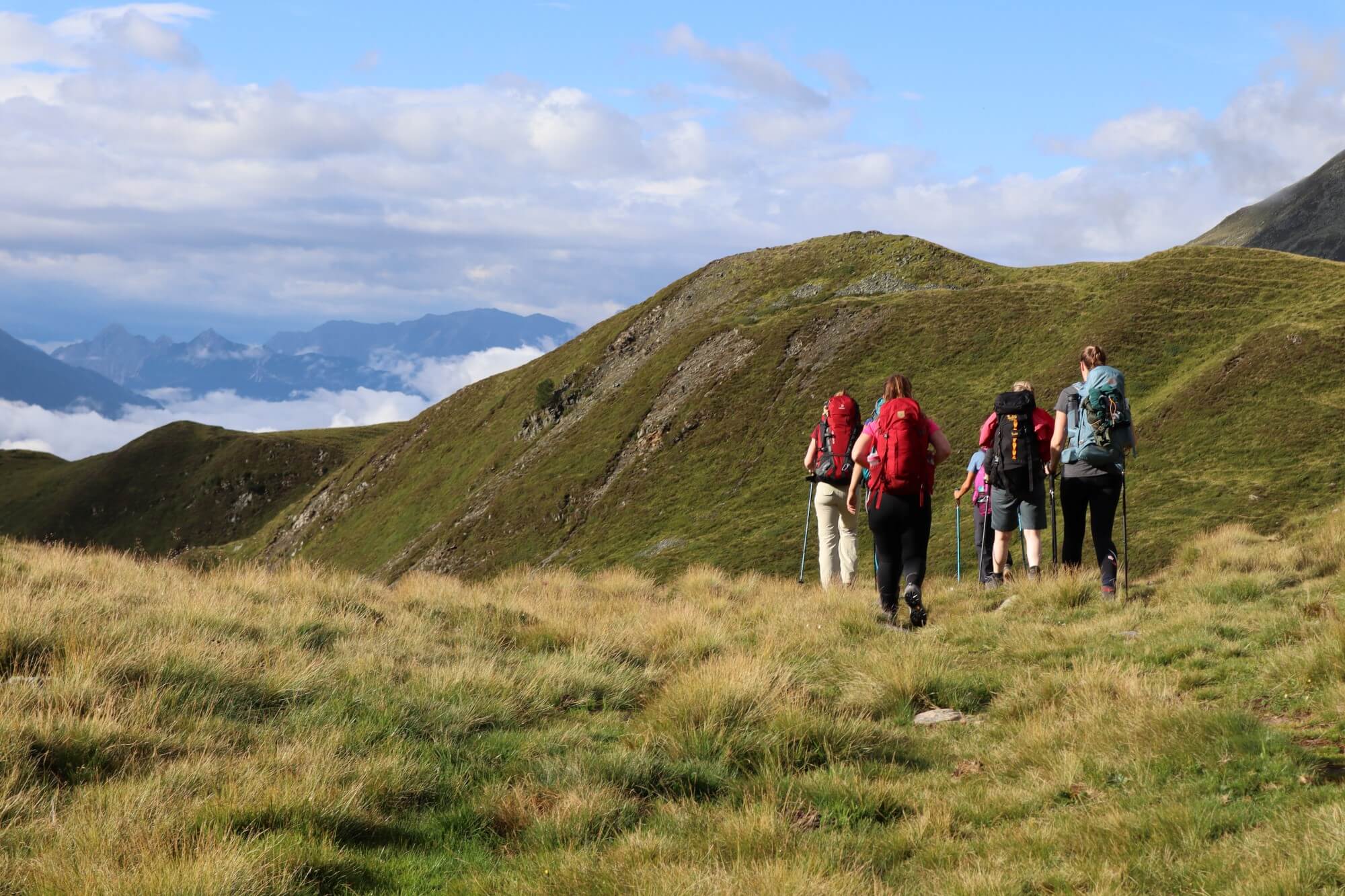Is your Tour du Mont Blanc, Alta Via 1 or other hut-to-hut hike around the corner? Are you ready? Is your body ready?
If you aren’t already hiking at an athletic level, and if you aren’t already training for your hike, then it’s definitely time to start thinking about a fitness routine. But even if you are already training, let me challenge your approach a bit. It’s quite possible that the way you are training is decreasing your chances of success, and not increasing your chances of success, on your upcoming adventure. Hear me out.
As is true with most things in life, we often put in more time and effort mitigating what we perceive to be risks, rather than mitigating the actual, statistically significant risks.
Most hikers focus on intense cardio training leading up to a big hike. While cardio is certainly helpful and you should keep doing it (in moderation), being unconditioned from a cardio perspective is not what prevents hikers from completing their hike. We’ve never had a customer tell us they were quitting their tour early due to their cardio condition, or lack thereof.
However, we have several hikers every year who quit early due to knee joint pain. Also valuable to know is that an ankle injury is the most likely scenario that would require you to call for rescue, which is usually an abrupt end to your trip, and often results in a very expensive helicopter bill if you don’t have the right insurance.


With that in mind, this is a great time to give your joints, particularly your knees and ankles, some tender loving care. If you are already training, it’s important to take a step back and assess whether your current training routine is helping, or hurting, the long-term well-being of your joints and your near-term hiking goals.
Let me mention that I do not have a background in Exercise or in Physical Therapy (although I spend a lot of time with Physical Therapists and consider them to be my heroes). What I share here are general suggestions based on my specific knowledge about these types of hikes and the problems that hikers are most likely to experience. I recommend seeking out a Personal Trainer (one that does this as a career, and not a salesperson at a large corporate gym disguised as a trainer) and/or a Physical Therapist to assist with your preparation.
Here are two very important facts that I think you need to know:
- The majority of Alpenventures customers who must end their tour earlier than planned do so because of knee pain
- The majority of search and rescue operations in the Alps are due to ankle injuries
That means that while strength training and cardio are both important as you prepare for your hike, it’s important to do both of these in a way that gently builds up, and doesn’t over-stress, or damage, your knee and ankle joints. I encourage you to do exercises recommended by movement experts that target strengthening your knee and ankle joints.


Here are some great resources from YouTube:
Knee Strengthening Workout by Upright Health
Ankle Strengthening Exercises to Improve Your Ankle Mobility by Upright Health
Ankle Strength Routine for Hikers by Chase Mountains
If you already know that your knees might be problematic, check out these videos as well:
Knee Pain Workout for Beginners by Upright Health
How to Fix Knee Pain in Lunges and Step Ups by Upright Health
Knee strengthening exercises to STOP knee pain by Body Fix Exercises
My thoughts on cardio training….
First, let’s talk about the fun-to-misery ratio. While I’d like to say that your upcoming adventure is going to be full of rainbows and butterflies, the truth is that physical activity like this is hard and there will be some low points along the way. The goal of any outdoor adventure is to keep the fun-to-misery ratio at an acceptable level. The incredible views, the charming huts and the delicious food will certainly take care of a portion of this for you. At the same time, cardio training and having good fitness on the hike also play a huge part in keeping the misery factor minimal.
A lot of our customers hyperfocus on cardio training as the best way to prepare for their hike. I absolutely encourage moderate cardio training, but with the following in mind:
Repetitive movements that are done with bad form cause injury (you can research Repetitive Strain Injury or RSI to learn more about this). That means that if you’ve recently taken up cycling or running as part of your training, it would be very valuable to schedule an appointment or two with a Personal Trainer or a Physical Therapist to have your form checked, and to provide you with the coaching you need to do this right. Or if that’s not an option, then at least have a friend video you during these activities and try to check your form yourself. Make sure you are doing everything with caution and in moderation.
With that said, here are a few cardio activities that are great for your training:
- Hiking – with as much elevation gain as possible. Over time, gradually add up to 8 kg./18 lbs. on your back. If you don’t have access to good hiking trails, then hop on a treadmill with the maximum incline.
- Stairs – these are most realistic outside if you can find a stadium or a good set of stairs somewhere. Otherwise, the stair stepper at the gym is a good substitute. Again, you can slowly add pack weight over time.
While you are at it, here are some other great training videos you can use to prepare for your hike:
The top three exercises every hiker should know by Fitness for Freedom
How to Train for Hiking by REI


Now let’s talk about recovery…
Recovery is an essential piece of building strength and endurance. The magic of your training session actually happens in the hours and day and/or days after your training session. Don’t cheat yourself by skipping this step. There are so many different theories on recovery, and recovery can be a very individual thing. But here’s an article that provides a good overviews of the different options for recovery. This would be a great topic to discuss with a Personal Trainer or with a Physical Therapist.
Post-Workout Muscle Recovery: How top Let your Muscles Heal and Why
In summary….
To sum this all up, if you are spending your precious energy on concerns about wildlife, about getting lost or about being hit by lightning, don’t. Instead, focus on mitigating the statistically significant risks with the following:
- Gentle training for your knee and ankle joints
- Moderate cardio training that does not lead to a Repetitive Strain Injury (RSI)
You can always consider adopting my personal training goals (in order of priority) as your own:
- Don’t get an injury while training.
- Don’t get an injury while hiking.
- Be able to talk on uphill sections.
If you start to notice pain anywhere while training, stop and address it. If you aren’t able to see a Physical Therapist, there are plenty of resources around the web that provide gentle exercises you can do to address pretty much any pain or muscle imbalance you may be experiencing. But truly, nothing compares to a Physical Therapist, and a visit to your Physical Therapist should be considered an investment in your future quality of life.
Train on!
